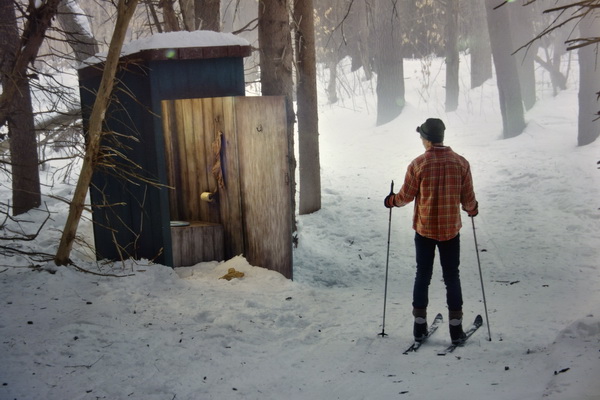
Cinematographic Photography Through the Lens of Gregory Crewdson
The « photography of setting a scene » (staged photography / cinematic photography)
Gregory Crewdson’s vision
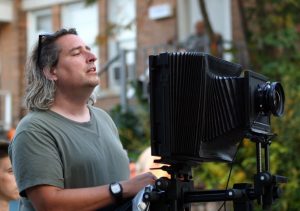
1962 —
Crewdson’s father was a psychoanalyst. During his childhood, Crewdson was fascinated to know the inner workings of the professional firm in their family home in Brooklyn. His father repeatedly told him that if he saw a patient that he recognized in the street, he should always pretend to not know them.
On a humorous note, as a teenager, he was part of a group of punk rock called “The Speedies“, which was active in New York. Their song, “Let me take your photo” has proved to be prophetic to the career of Crewdson. In 2005, Hewlett Packard has used the song in an advertising in order to promote its digital cameras.
Song: Let me take your photo
He studied at different colleges within New York and completed a Masters of Fine Arts at Yale Univeristy, without having yet fully realizing his interest for photography. In 1993, he obtained a position as a teacher at Yale, which he continues to do today.
His first photographic project was carried out between 1992 and 1997. Entitled “Natural Wonder”, it is a series of composition of still lifes with a macabre expression.
Artistic Inspiration
Grewdson’s cinematographic style embodies his natural ability to capture a detail-oriented world created within any space. It illustrates the psychological perspective by exploring its own anxieties and desires.
All of his outdoor photography is captured at dusk, in order to balance the combination of natural light and multiple light sources to create the desired atmosphere.
In general, he is not behind the camera. Crewdson prefers to keep his attention with the extras and the Technical Team, which can represent up to a hundred people. His meeting with the Director from Photo XX has been notable in its capacity to develop images more complex learned the techniques of production film.
“When I compose my images, I never think of what could have happened before or what could happen later” indicates Crewsdon. “I do not reflect in a linear way, I think in terms of composition and images”.
Crewsdon’s photographs can sell up to $150,000. “My goal is to develop something fragile, mysterious and beautiful. ”
The film « Brief Encounter »
In 2012, Crewdson is the subject of a documentary entitled “Brief Encounter”, produced by Ben Shapiro. This film describes the inspiration and production techniques for his work “Beneath the Roses”. He explains his method of artistic creation and creative process.
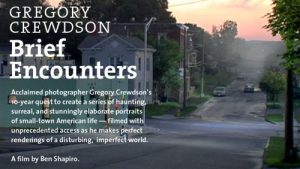
Crewdson tells the story of how at the age of 10, he and his father went to the Museum of Modern Art in New York, which was exhibiting Diane Arbus’s work. This experience had imprinted him because he began understanding the psychological effects of an image, the shock value and fear it can produce. He felt that his own vision of the world was aligned to that of Arbus and this experience had established the framework for his future vision as an artist.
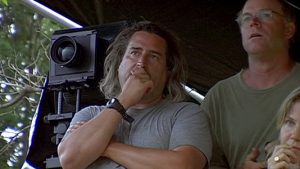
Influence and inspiration: Staged Photography
As a professor of photography at the Yale Univeristy, Gregory Crewdson embodies the new generation of staged photography, including artists such as Jeff Wall (1946 – _) (Canadian photographer) or James Casebere (1953 – ) who are pioneers of this style.
Consult the images: Wall_Portfolio
Consult the images: Casebere_Portfolio
His inspiration derives from the dark side of America, anxiety, and the poor concern for monotony that exists in smaller towns.
Crewdson works as a director and produces elaborate and detailed storyboards for this photographic landscapes He’s equipped with a full team of film and stage workers (set designers, makeup artists, etc) and special effects worthy of science-fiction films. According to Crewdson, in comparison to other artistic mediums, only photography can communicate a strong emotion while being silent.
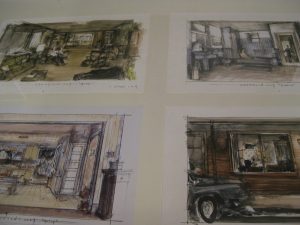
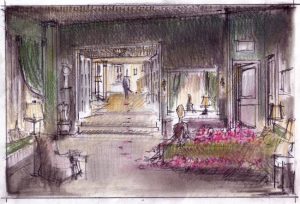
Set design of photographic scenes by method of storyboarding
Crewdson finds his inspiration from the works of director David Lynch (Elephant Man, Blue Velvet – he claims that this film has changed its vision of the world), Alfred Hitchcock, Edward Hopper and Diane Arbus. Gregory Crewdson’s imagination plays with the rules of fantastical cinema, Hitchcock to Lynch or even Spielberg.
There is often a parallel between Crewdson’s photography and the Edward Hopper’s paintings. However, the famous painter knows how to create much more of anticipation with scenes that are less revealing. Hopper’s work is minimalist and preserves only the essential pieces of the scene allowing more room for imaginative interpretation. For example, his method of painting the sun-reflected light on the brick wall tells us a the futility of the time and solitude.
In contrast, Crewdson embellishes his scenes. If a woman does not appear to be sufficiently unhappy in a room, he adds a few antidepressants on the bedside table and an overflowing ashtray within the frame – highlighting the idea of despair. In America, it must make the demonstration without the shadow of a doubt that life can be painful.
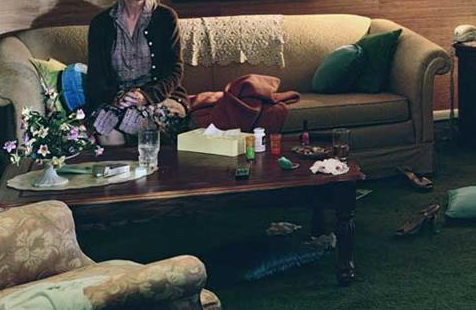
Narrative Style
Crewdson’s creative techniques are borrowed from the film industry. It uses actors, lighting designers, technical teams, make-up artists, an artistic director, who collaborate in the production. In the process, the main streets of several small towns in Vermont and Massachusetts were closed. He has often built complete sets of any room, with extreme attention to detail.
It is not only the mode of production and the complexity of his projects that give Crewdson’s works a cinematic look. His images give the impression of excerpts taken from a film sequence, transforming the film’s story into a simple composite and very elaborate image. In his attempt to produce what he calls a “strangely perfect image,” the artist sees the camera as an invasive necessity. .
The lack of purpose or logic in the scenes is indicative of the artistic approach. Subjects in Crewdson’s work avoid visual contact with the camera; they express misery, jealousy, anger or bewildered astonishment. They stand motionless in the rain, they wander aimlessly, get up at night to go into the woods without purpose. They live a nightmare at home or in a hotel room.
The influence of small, typically American towns and villages is easily recognizable; the scenes bring out the dark side that turns into a cinematographic cliché. It is easy to understand that the characters are lost or tormented.
It is impossible not to invent a story from an image of Crewdson. What connects the subjects to a story is the abandoned main street, a puddle on the road, the rain forest and dark penetrated by a railway, the anonymous suburb, a room with dim lights where there are things that we should not see.
Post-Production
Post-production processing is essential for Crewdson’s production. In addition to elaborate image processing, the use of composite image technique is common. For each scene, he draws about 40 images. From these images, the post-production team chose portions of images that they superimposed on the base image chosen for the final production. The shots are captured with a camera attached to a tripod, which allows the use of the composite image approach.
Chronology of Major Projects
Natural Wonder between 1992 and 1997
In the context of the suburbs or on a detailed set of American homes, interiors, or neighborhoods, Gregory Crewdson presents a haunting world with cinematic photos of alienation and strange isolation.
Consult the images: Crewdson_Natural_Wonder
Series Hover, 1996 to 1997
In the Hover series, Crewdson turns to humanity and explores its darker aspects. He abandons the close-ups and uses the wide angles. These black and white photographs offer a glimpse of private backyards in which disturbing acts occur: a man kneels on a woman who has collapsed and is inexplicably bound by party balloons; elsewhere, a man obsessively mows his lawn in concentrated circles of increasing importance.
Consult the images: Crewdson_Hover
Twilight: 1998 to 2002
Twilight consists of forty photographs of complex staging, large paintings that explore the relationship between the interior and the fantasy universe, between the North American landscape and the intracasy of the imagination.
Consult the images: Crewdson_Twilight
Dream House Exhibition, Oct 23 – Nov 22, 2003
Beneath the Roses, 2003 to 2008
Beneath the Roses is an exhibition of twenty large-scale photographs. In these theatrical compositions of realistic panoramic images, Crewdson explores the recesses of the American psyche and the troubling dramas that are at play in everyday life.
Consult the images: Crewdson_beneath_the_roses
Sanctuary, exhibition, 2011
The Sanctuary exhibition gives the impression of crossing a ghost town, emptied of its inhabitants. It is a documentation of the legendary studios of Cinecittà, very close to Rome. With abandoned production teams, this monument of Italian cinema falls into ruins, carrying with it all its legends. Crewdson’s black-and-white work is very different from his other series but compares with his other worlds: a city with a disturbing atmosphere, no apparent action, and a flood of questions about what this place has to do with real life or the imaginary, what it was and what it will become, the secrets it hides and the identity of those who have lived.
Consult the images: Crewdson_Sanctuary
Brief Encounter, 2012
The film “Brief Encounter” follows the famous photographer in his creative process of more than 10 years to create a series of obsessive and surreal portraits of a small American city. His photos are referred to as single-image films. Each composition is bursting with narrative, partly because it uses special effects cinematographic procedures, hundreds of lights, huge teams of technicians. We travel with him – from his initial inspiration, his creativity and through innumerable logistical obstacles, until the moment when all the elements merge in one perfect moment. Despite their large scale, Crewdson’s images are inspired by his most intimate dreams and fantasies.
Cathedral of the Pines, 2013 and 2014
With this series, produced between 2013 and 2014, Crewdson departs from his interest in strange suburban subjects and explores human relationships within multiple natural environments. In images that draw inspiration from nineteenth-century American and European painters, Crewdson captures characters from the small rural town of Becket, Massachusetts, and its vast surrounding forests, including the trail from which the series takes its title. Interior scenes loaded with ambiguous narratives stress the tensions between the probe’s rights and the separation, intimacy and isolation.
Consult the images: Crewdson_Cathedral_of_the_Pines
Influence
His work has a great influence on a whole generation of younger artists mixing film and photography. In 2006-2007, his work was the subject of a major traveling retrospective (DA2, Domus Artium 2002, Salamanca, Hasselblad Center, Gothenburg, Sweden, Palazzo delle Esposizioni, Rome, Rudolfinum Gallery, PragueFotomuseum Winterthur, Winterthur, Switzerland; Museen Haus Lange / Haus Esters Krefeld, Krefeld, Germany, Fotomuseum Den Haag, The Netherlands).
One can surely refer to the television series “The Little Life” created from scratch by Claude Meunier and Serge Thériault as a significant contribution to the art of staging photography.
What should be kept in mind when considering how to make “staged” photography?
1. Color Calibration
A technical component in the definition of images is related to the importance of colorimetric calibration. A single image can be composed of multiple photographs, which must have the same light temperature. This control is carried out 1) by sampling the temperature of the light and calibrating the cameras for each scene of the other, under different lighting or at different times of the day and / or 2) in post-production. reference to photos with calibrated targets.
2. Balancing light sources
By using many light sources to illuminate a scene, the light intensity of each source must be have an equilibrium according to the whole scene. This is where the light meter comes in. It is necessary to be able to differentiate between the incidental light (the one which “falls” on the subject independently of its reflexivity) and the reflected light (which depends on the reflexivity of the photographed subject). These are two different measures. In general for a complex scene, the reflected measurement mode which is in spot mode, is used to isolate each light source.
3. Harmony of colors
Here is an aspect of photography that we all know. Complementary colors are often chosen to ensure the harmony of the scene, either with the wardrobe of the models, the color of the walls or in post-production. The color palette of the scene allows you to group images that would otherwise be disparate. It is therefore necessary to know the complementary colors that are used for the editorial photo. The sense of belonging is also related to the congruence of composition. For example, with wedding photos, we often choose a black or very dark background, or a cream-colored background, to ensure continuity between different sites.
4. Tell a story
We see this trend with the use of a sequence of images, or an image loaded with details and symbols. For example, the use of a color such as blue imposes a feeling of heaviness, while the orange communicates a sense of warmth.
5. Composition
The DOP frequently uses the rule of thirds and the vanishing lines to compose the images. These techniques are also used in photography. Using a mirror creates a more complex scene with depth of field and lighting variations. These techniques can be used by photographers.
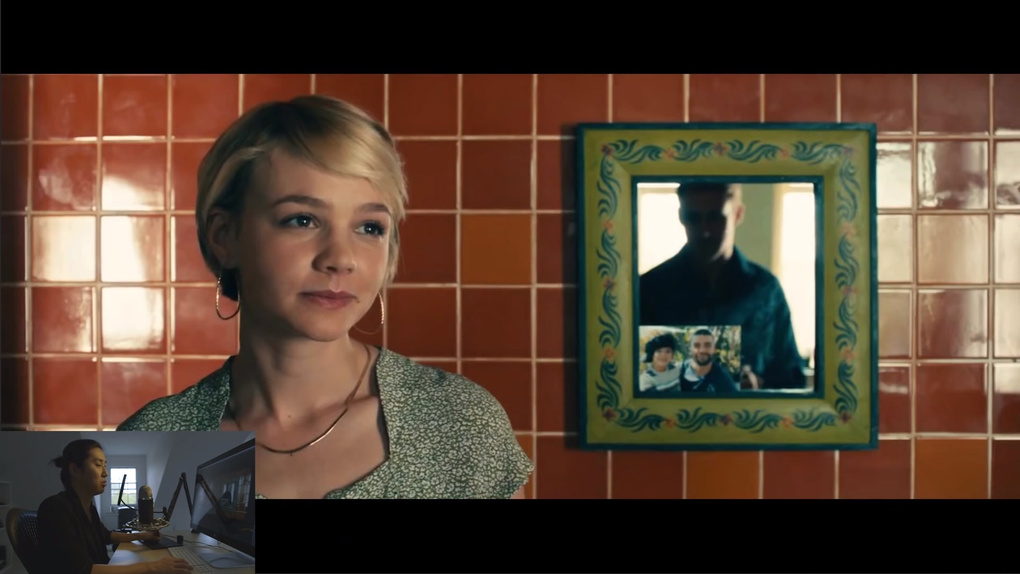
________________________________
Références
Influence of cinematography for photographic production
https://fstoppers.com/editorial/three-ways-cinematography-can-improve-your-photography-138114
Three Ways Cinematography Can Improve Your Photography by Robert K Baggs
https://www.quora.com/What-is-the-difference-between-cinematography-and-photography
What is the difference between cinematography and photography?
https://www.lensculture.com/articles/ryszard-lenczewski-cinematography-from-still-to-movie
Cinematography: From Still to Movie to photographs, interview with Ryszard Lenczewski
Jeff Wall, A view from an apartment, 2004
http://www.tate.org.uk/art/artworks/wall-a-view-from-an-apartment-t12219
Entre la ville et la mort, Between the city and death, by Julien Foulatier 2013
Creating Photographic Art – Exclusive Interview With Gregory Crewdson 2014
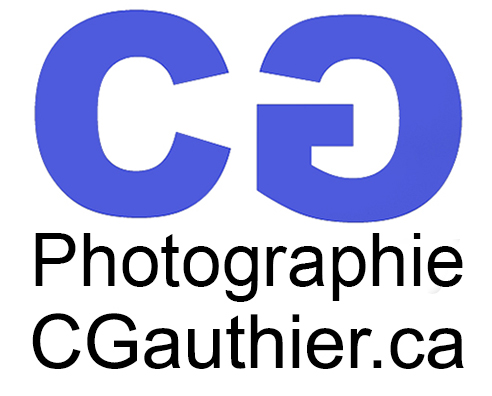

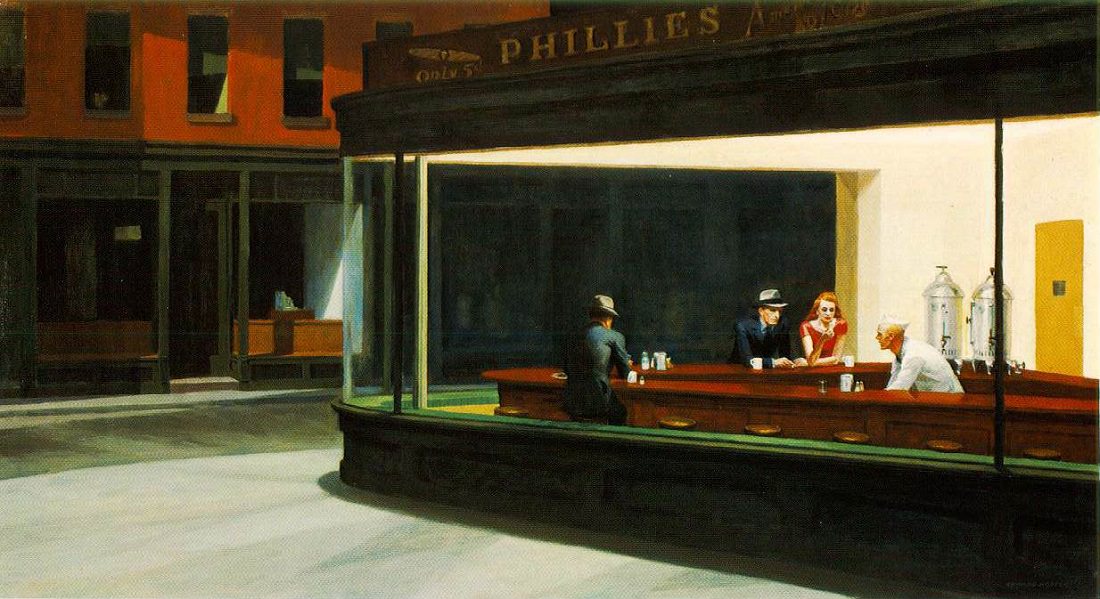
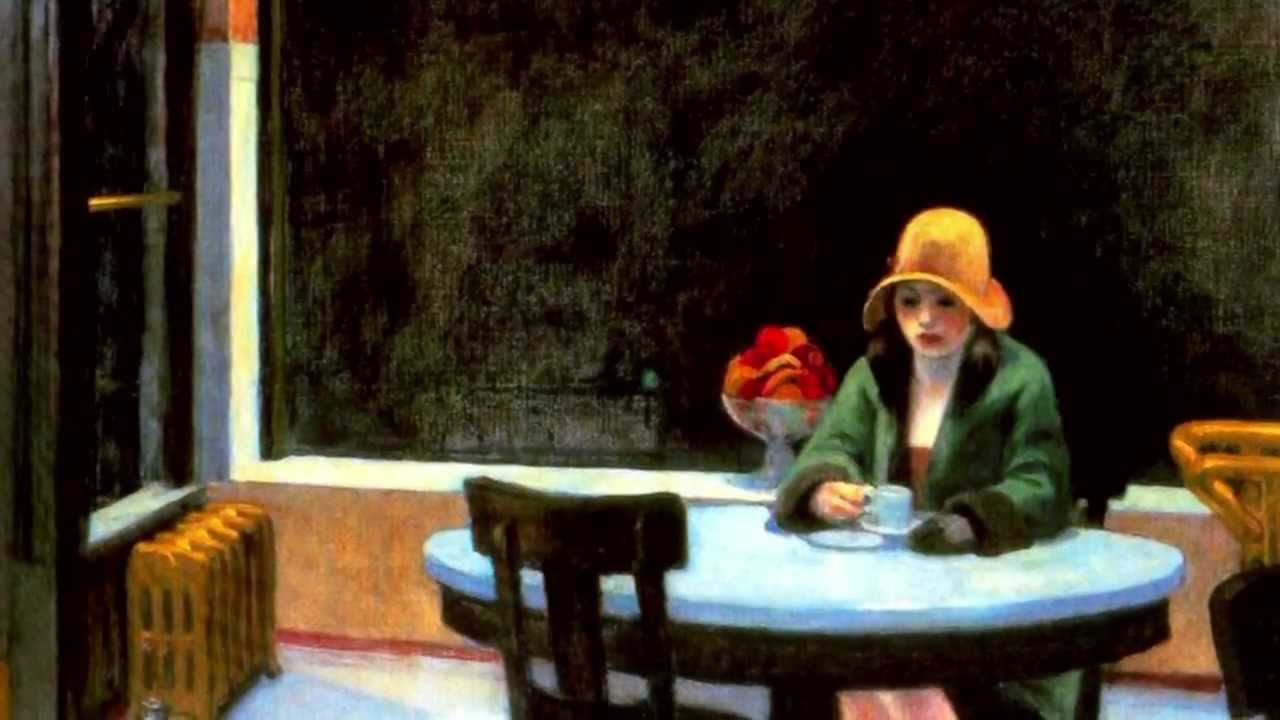
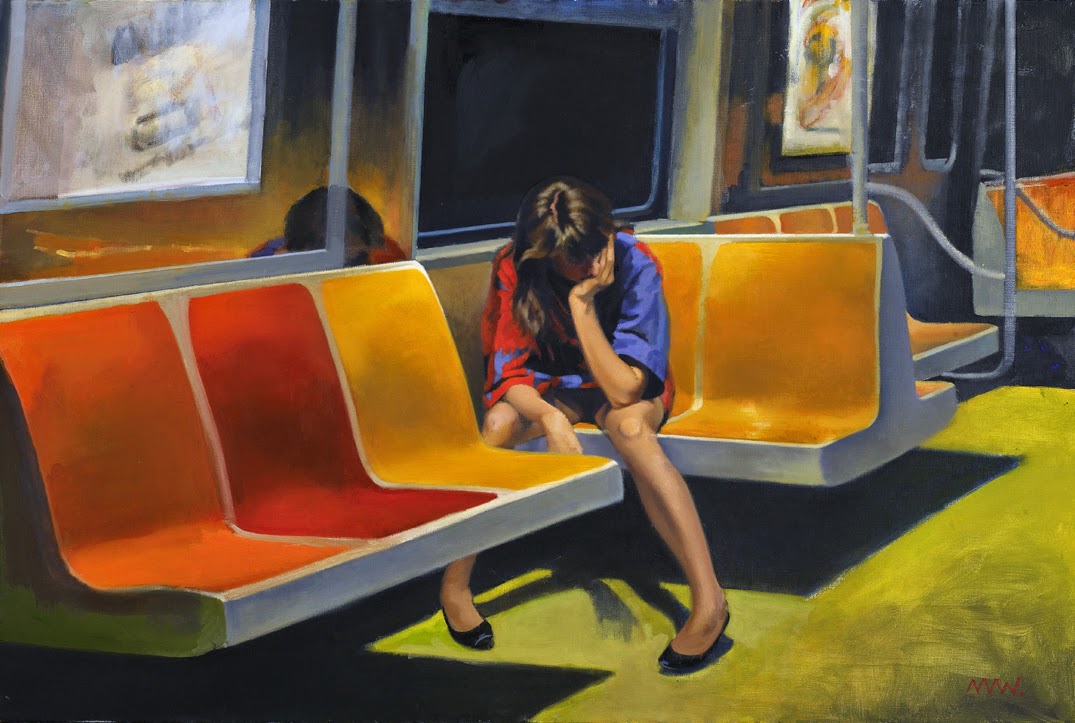
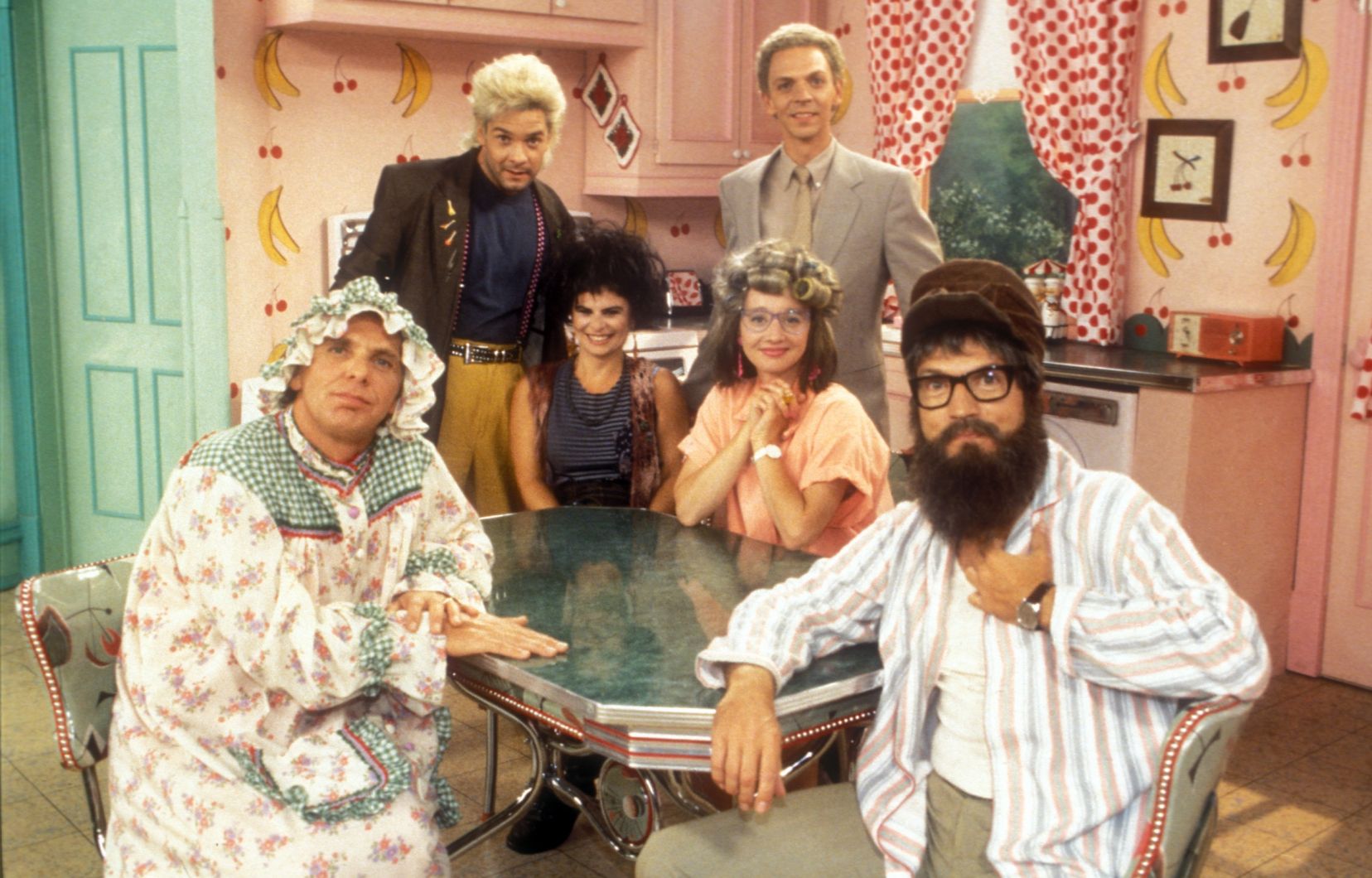
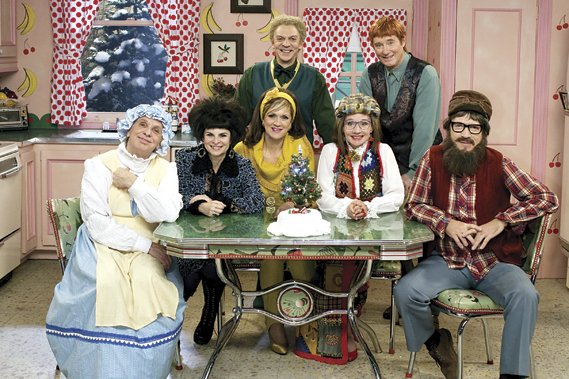
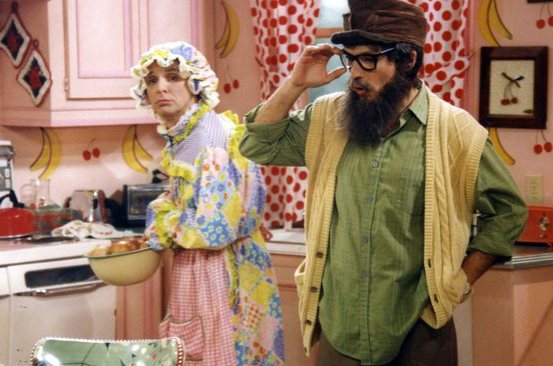
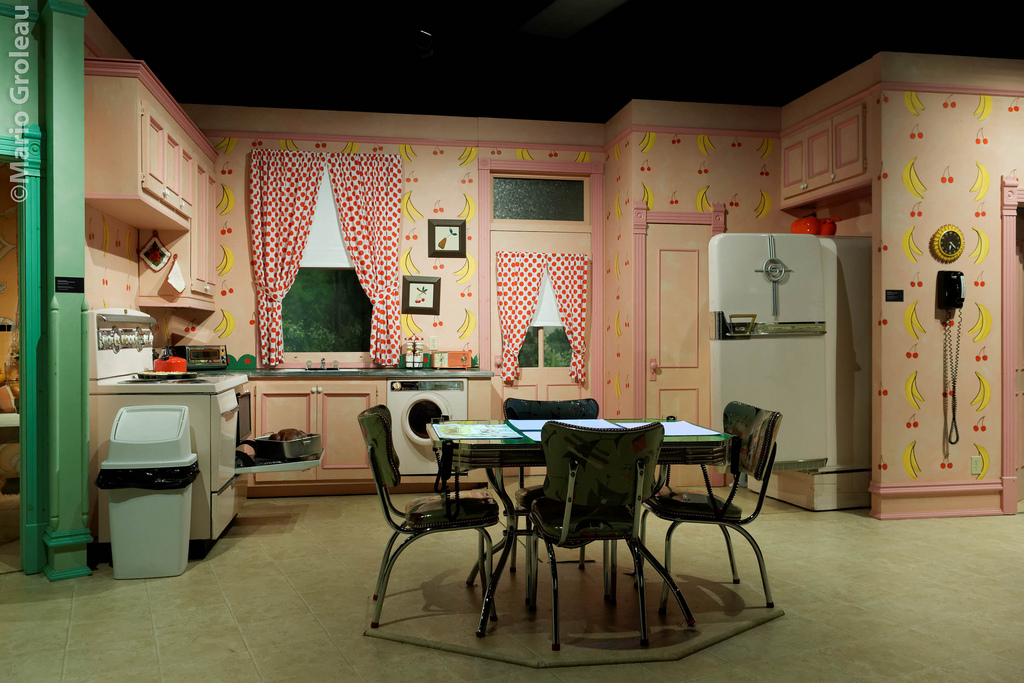
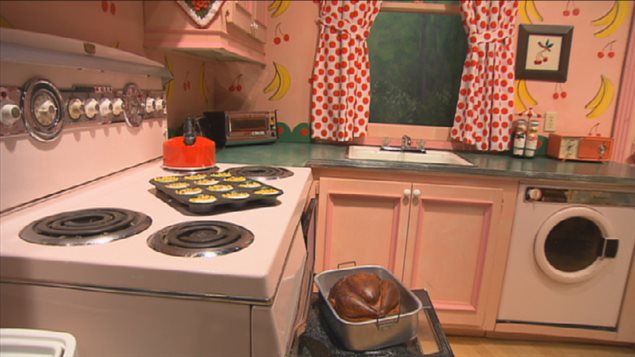
No Comments